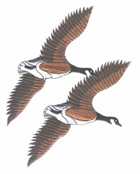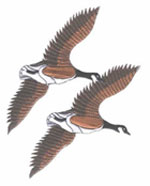3600 to 2000 BC The Megalithic temple period in Malta during which times imposing megalithic monuments were built in different areas of the island. These include the Hagar Qim temple complex and the Hypogeum
900 to 750 BC The Phoenicians colonised the islands
480 BC The Carthaginians took over the Maltese islands.
218 BC Malta was conquered by the Romans at the beginning of the Second Punic War.
60 AD Saint Paul was shipwrecked on Malta on his way to Rome and introduced Christianity to the local population.
395 Malta was taken over by the Byzantines following the division of the Roman Empire between East and West.
870 Malta was conquered by the Arabs. The few surviving remains from this period include burials at the Roman Domus site.
1090 Count Roger Ist of Sicily established Norman rule over Malta. Legend narrates how Count Roger also gave the islands their national flag.
1194 Malta and Sicily were taken over by the Swabians (House of ohenstaufen).
1266 Malta and Sicily were taken over by the Angevins.
1283 Malta and Sicily became part of the Crown of Aragon.
1427 King Alfonso incorporated Malta into the Regium Demanium (crown property).
1530 Emperor Charles V of Spain granted the Maltese Islands the Order of St John of Jerusalem in perpetual fief. The Order had to present a falcon every year in fief to the Spanish monarch and Vittoriosa was chosen as the Order's Headquarters.
1565 A conspicuous Ottoman army invaded the islands but the Knights of St John together with the Maltese resisted heroically until the arrival of a relief force from Sicily sent by the Spanish Viceroy. The most notable representation of the Great Siege is to be found in the Throne Room of the President's Palace in Valletta.
1566 The first stones of Malta's capital city Valletta were laid.
1571 The Order of St John moved its headquarters to the new city of Valletta from Vittoriosa and subsequently built their Auberges, hospital and Conventual church.
1607 Michelangelo Merisi da Caravaggio arrived in Malta and was shortly afterwards made a knight of Malta. In Malta Caravaggio painted his Beheading of St John the Baptist for the Oratory of the Former Conventual church of St John's. His known only signed painting.
1658 Mattia Preti's first worked for the Chapel of Aragon at St John's co-cathedral. Preti was later to decorate the whole ceiling of the former conventual church of St John's and some of his better works are now at the National Museum of Fine Arts.
1692 An earthquake severely damaged the Old Cathedral in Mdina later to be rebuilt to the design of Maltese architect Lorenzo Gafa.
1798 Napoleon Bonaparte captured the islands from the Order of St John on his way to Egypt
1799 The Maltese revolt began against the French as they blockaded the French garrisons within the three cities. Great Britain assisted the Maltese in their endeavour and took Malta under its protection, in the name of the Kingdom of the Two Sicilies.
1814 Under the Treaty of Paris, and subsequently ratified by the Congress of Vienna, Malta became a crown colony of the British Empire.
1919 Sette Giugno protested over increases in the price of bread. British soldiers fired on the crowd and killed four Maltese protesters, during a violent riot instigated by students. The protests lead to a greater autonomy for the Maltese.
1921 Malta's first self government was established
1934 The English and Maltese were declared the sole official languages of Malta
1940 Italy declared war on Britain and shortly afterwards the island sustained its first air raids. The island was subsequently heavily bombed by the Axis forces but the Maltese and the British resist heroically even when on the verge of famine.
1942 King George V awarded the George Cross to the Maltese islands so as to "bear witness to the heroism and devotion of its people". Britain's highest civilian decoration for heroism.
1947 Self-government was granted.
1959 Self-government was revoked.
1962 Self-government was restored.
1964 Malta gained its Independence from Britain to become a Constitutional Monarchy with Queen Elisabeth II as its Head of State. Malta also became a member of the United Nations and the Commonwealth.
1964 to 1971 The Nationalist Party pursued a pro-Western alignment.
1971 Dom Mintoff's Malta Labour Party took power. A new era began of non-alignment and special friendship with Libya and Communist states.
1974 Malta became a Republic with the last Governor-General, Sir Anthony Mamo, serving as its first President.
1979 Saw the expiry of the Military Agreement between Malta and the United Kingdom. The British forces closed its bases and left the island.
1984 Mintoff resigned, and was succeeded by Carmelo Mifsud-Bonnici.
1987 The Victory of the Nationalist Party marked a move towards European integration. Eddie Fenech Adami became the prime minister.
1989 Malta hosted its first summit between Soviet President Mikhail Gorbachev and US President George Bush.
1990 Malta submitted an application for full membership to join the European Union (E.U.).
April 1995 Malta joined the N.A.T.O. Partnership for Peace programme, only to leave in October 1996 in order to maintain its neutrality.
1996 The Labour Party led by Alfred Sant, regained power and shelved an application for E.U. membership.
1998 Eddie Fenech Adami's Nationalist Party was returned to power, and revived their application to enter E.U.
1999 Guido de Marco was sworn in as president.
May 2001 Pope John Paul II visited Malta, where 98% of the population are Roman Catholic. The Pope beatified three Maltese clerics at an open-air ceremony.
December 2002 The E.U. summit in Copenhagen formally invited Malta to join in 2004.
March 2003 Just over 53% of the countries voters said yes to E.U. membership in a referendum.
April 2003 Nationalist Party claimed victory in a general election, confirming the pro-E.U. referendum result.
March 2004 Lawrence Gonzi was sworn in as the prime minister following the retirement of veteran leader Edward Fenech Adami.
May 2004 Malta was one of 10 new states to join the E.U.
July 2005 The Parliament ratified a proposed E.U. constitution, and Malta joined the euro zone.
January 2008 Malta adopted the euro currency.
March 2008 During a general election, the ruling Nationalist Party won by a very slim majority.
April 2009 Pope Benedict XVI made a pilgrimage to Malta, following in the footsteps of early Christian missionary St Paul, who was shipwrecked on the island 1,950 years previously, in 60 AD.
Source
president.gov.mt/history
news.bbc.co.uk
Other articles of interest about the Maltese Coups
..



